America’s National Parks are one of this country’s greatest inventions. Preserving the most incredible natural spaces for generations to visit and enjoy attracts so many people to hit the open road and discover these amazing places.
Unfortunately, many of these spaces have become so busy in recent years that visits to the parks more closely resemble a visit to the mall right before Christmas, where half the day is spent fighting for a parking spot and waiting in lines.
These are the 13 national parks that have been completely overrun and may not be worth the visit anymore.
Yosemite National Park
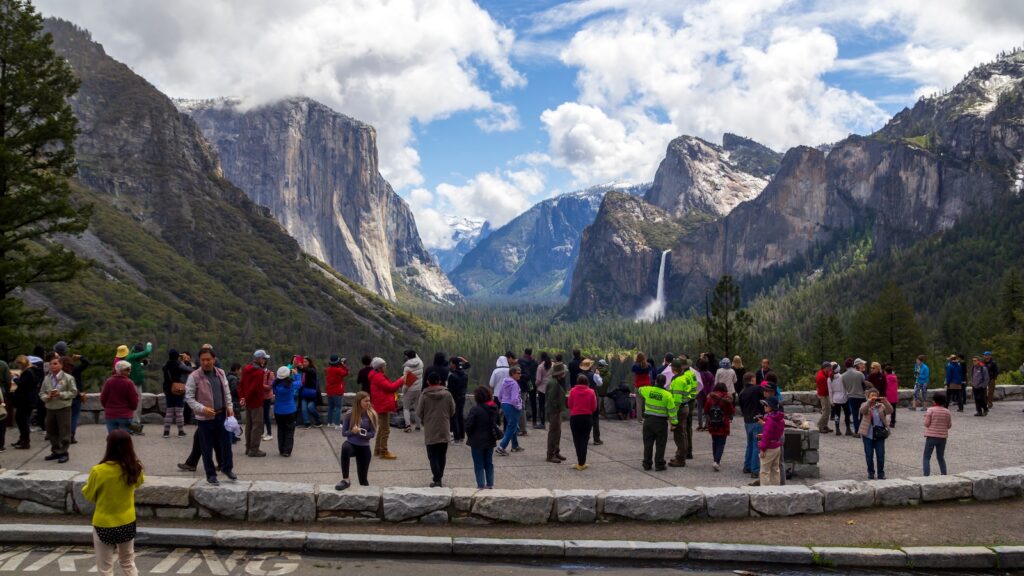
Yosemite National Park is one of our favorite national parks, but this crown jewel has become so overrun during the summer that it is hardly worth it anymore. In recent years, visitors have reported waiting hours in line to get into the park and hours more looking for a parking spot along the valley loop.
Luckily for those looking to get more enjoyment out of their visit, the park is now restricting daily visitors and requiring a timed entry permit during the busy summer months. Despite the headache of having to buy an entry permit ahead of time, this should help cut down on crowds and make everyone’s day trip to the park a more enjoyable experience.
Glacier National Park
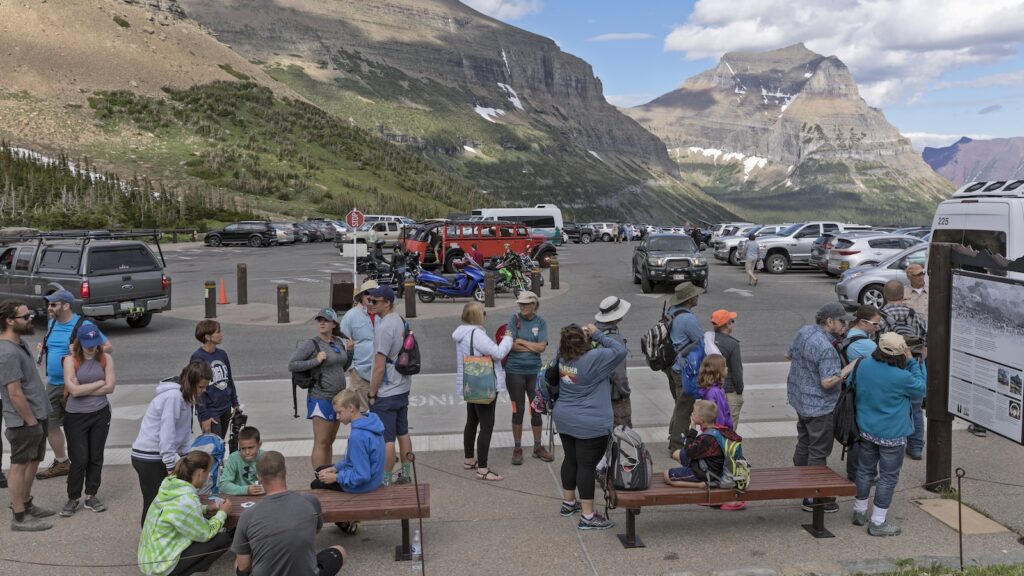
Glacier National Park showcases the best of the Rocky Mountains, with epic hikes and stunning views from every angle. The park is also one of the best wildlife viewing parks in the country, with some of the country’s biggest land mammals calling it home.
Due to the rugged nature of the park, there are limited entry points and only one road crossing the park from east to west. This means that the 2.9 million visitors visiting the park each summer are congregated in a very small area, leading to massive traffic jams and parking lot headaches.
From now on, the park has implemented a vehicle reservation system for its three most popular roads: Going-to-the-Sun, West Glacier, and North Fork.
Mt. Rainier National Park

Mt. Rainier National Park is the crown jewel of the Pacific Northwest. The mountain dominates the skyline from almost every angle in the Puget Sound area, serving as a beacon for weekend adventurers looking to enjoy this mountain’s epic hikes and beauty.
This popularity has led to hours long backups to get into the park on busy summer weekends. Parking at popular areas like Paradise has also become near impossible for anyone arriving later than 9 am. This has resulted in cars being parked alongside roads for miles before and after the parking lots.
Arches National Park
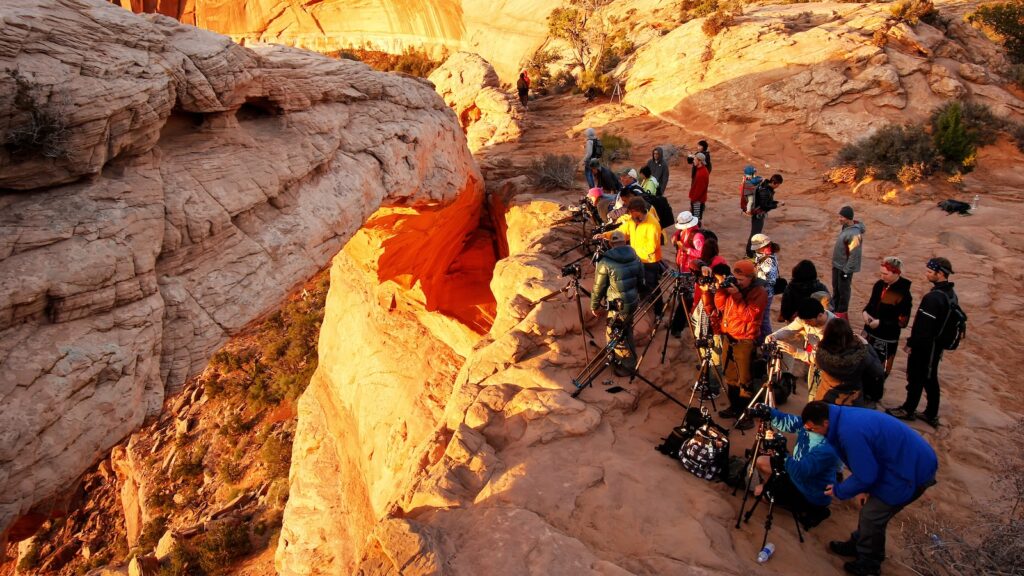
Arches National Park is a photographer’s dream with stunning shots through the park’s numerous natural arches that dot this desert landscape. This beautiful scenery attracted more than 1.5 million visitors this past year, leading to serious overcrowding at some of the park’s most popular locations.
During sunrise and sunset, when most people would expect a serene experience, you’ll instead be surrounded by dozens, if not hundreds, of photographers looking to all get the exact same shot.
Rocky Mountain National Park
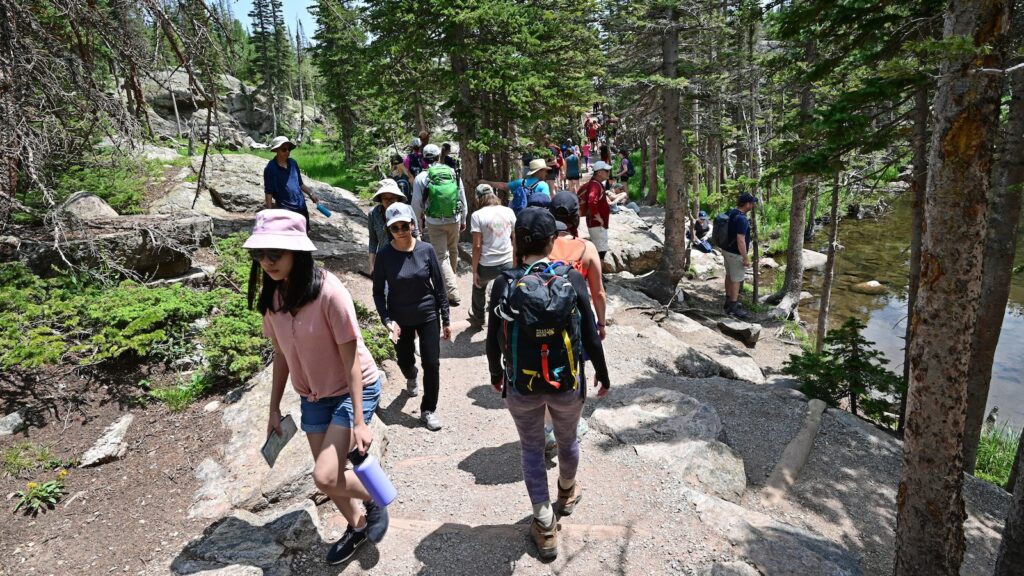
Rocky Mountain National Park is a gateway for Denverites and tourists alike who want to hike and explore the high alpine country. During the past year, this park was America’s 3rd most visited national park, with 4.1 million visitors.
While the park is large, and there is no shortage of places to stop for a hike, this doesn’t mean that massive crowds and long backups don’t exist near the park’s entry and exit points.
Zion National Park
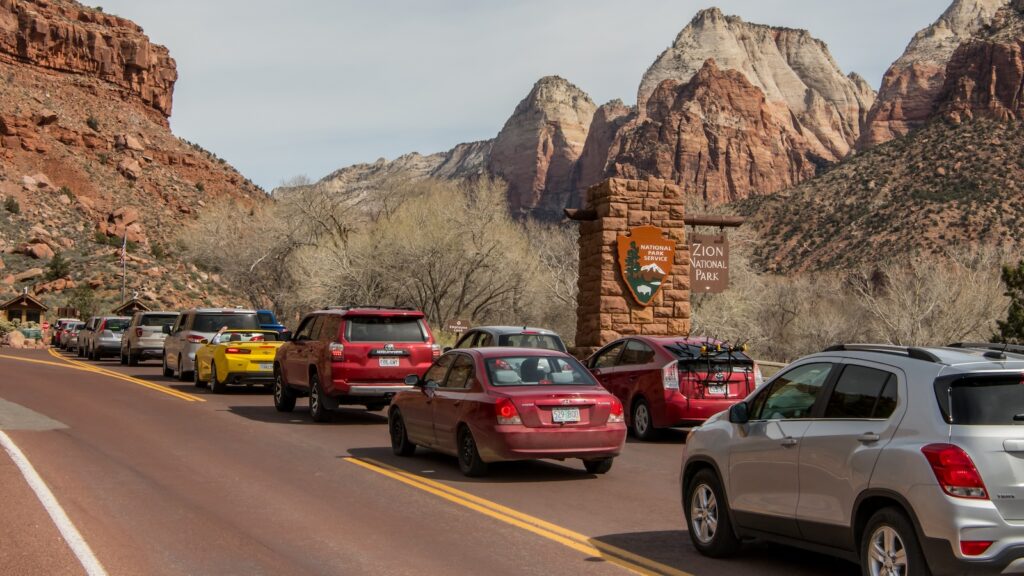
Zion National Park sits just behind Rocky Mountain National Park, which had 4.6 million visitors last year. Tourists flock to this stunning park for its epic hikes, like Angels Landing and the Narrows, world-class mountain biking on the area’s slick rock, and stunning drive through the park.
The park has made great efforts to encourage the use of shuttles to reduce traffic jams, but you still have to arrive before 9 a.m. on most busy days, or you’ll risk not being able to find a spot to park.
Acadia National Park
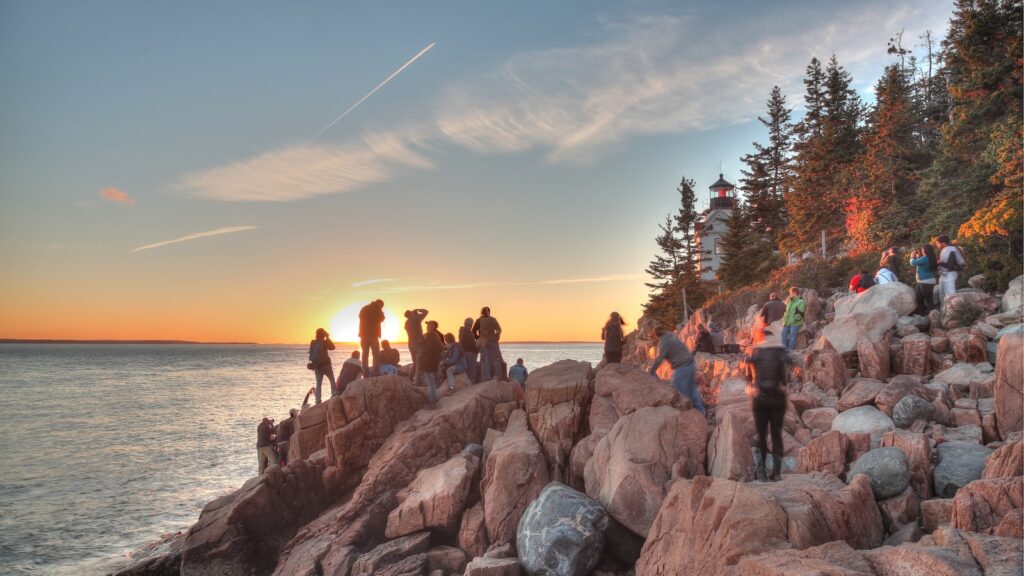
Acadia National Park is a must-visit destination in the far northeastern corner of the country. The park draws millions of visitors yearly for its stunning ocean views and trails, leading to unbelievable lookout points.
Despite its remote location, far from most population centers, the park was still the country’s seventh-most-visited national park during the past year. This has led to massive overcrowding at the park’s most popular viewpoints, like Cadillac Mountain.
Great Smoky Mountains National Park
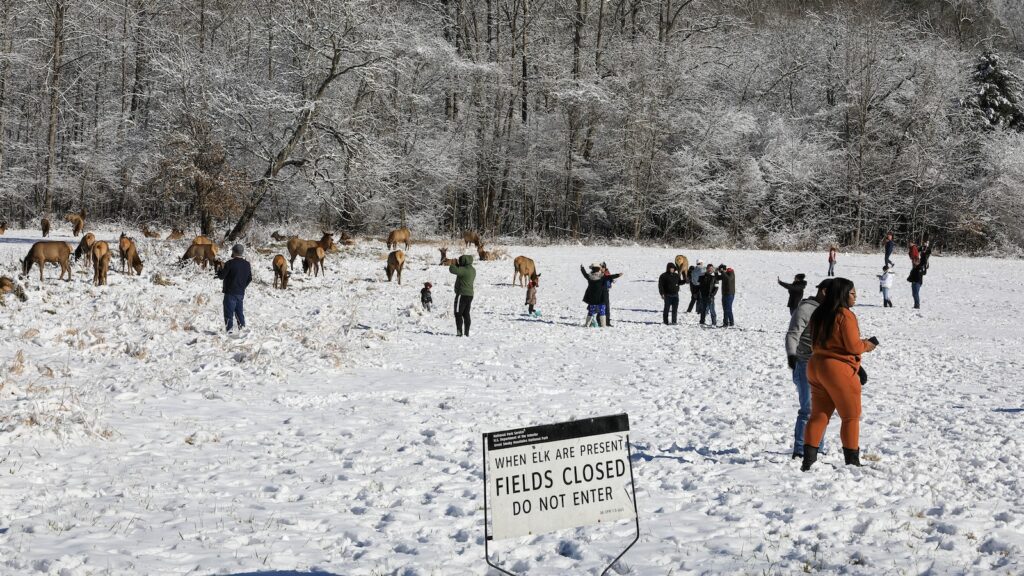
The Great Smokey Mountains National Park is, by far, the most visited national park in the country by a factor of 2x. Its 13 million annual visitors are more than double those of the next most visited park, Grand Canyon National Park.
The Blue Ridge Parkway is a must-visit destination during the peak summer and fall foliage seasons, which has led to large backups and pollution from cars slowly idling along the road.
Grand Canyon National Park
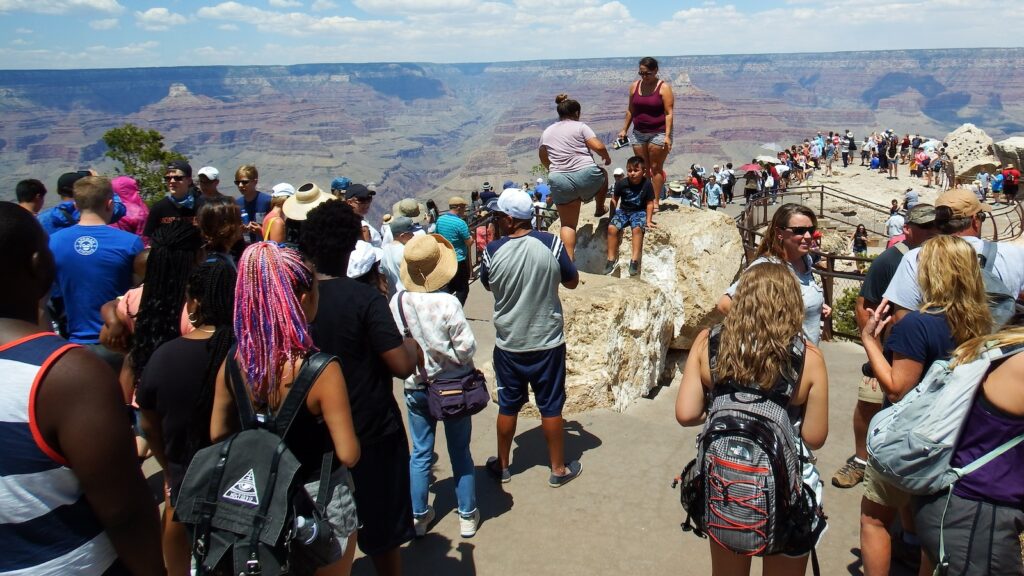
Grand Canyon National Park is the country’s second most visited park, with 4.7 million visitors in the past year. The majority of these visitors are congregated within a small area along the south rim, which leads to serious crowds looking to take in the views of this stunning United States landmark.
If you want to escape the crowds, try planning a trip to the north rim and staying away from the most popular areas around the visitor centers.
Yellowstone National Park
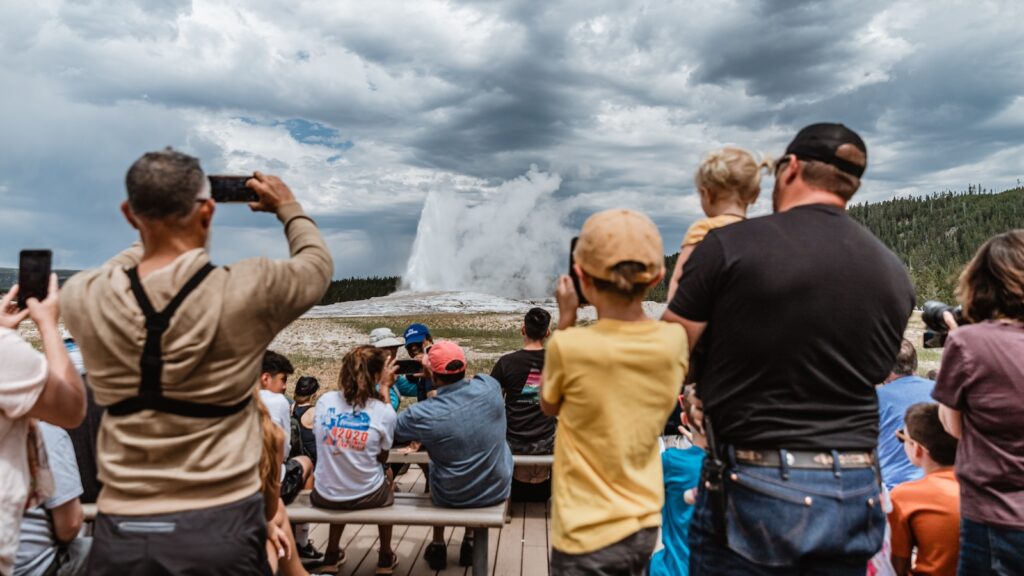
Yellowstone National Park was America’s first national park and is still one of its most iconic locations. Its thermal springs, geysers, and wildlife are must-sees for all visitors who venture to this remote park.
While there is plenty of room to spread out and enjoy the backcountry, a majority of tourists congregate around the main roads and attractions like Old Faithful, the Grand Canyon of Yellowstone, and Grand Prismatic Springs.
Grand Teton National Park

Grand Teton National Park lies just south of Yellowstone and offers massive mountain views and plenty of wildlife viewing while being at the doorstep of the uber-affluent town of Jackson, Wyoming.
The park offers stunning hiking and backpacking opportunities in the rugged Grand Teton mountains, but parking lots for these hikes are often full early in the morning. This leads to traffic jams along the roads and missed opportunities for those looking to get out into nature. The park’s frequent wildlife sightings also lead to huge traffic jams, although the park rangers do their best to keep things moving.
Bryce Canyon National Park
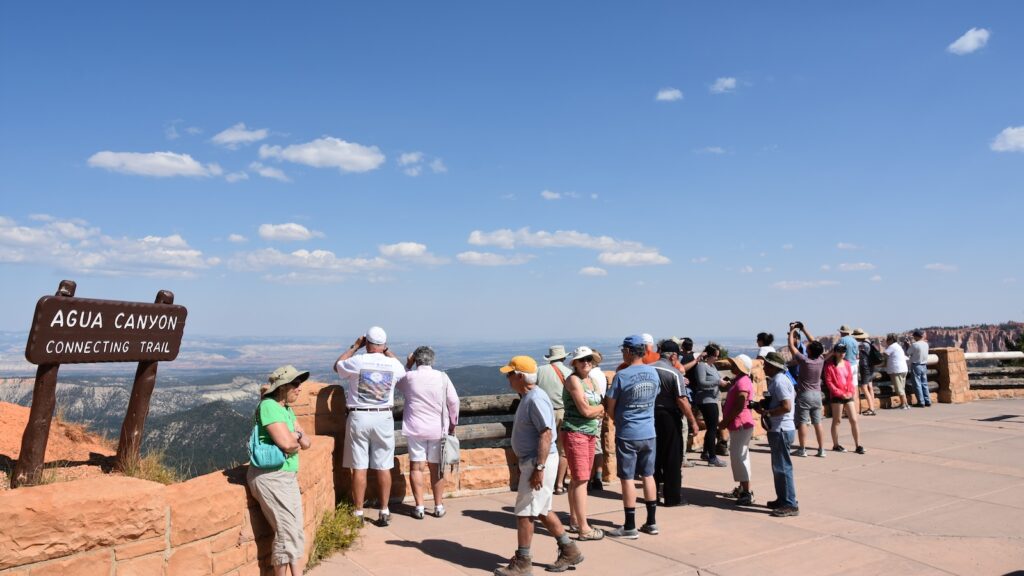
Utah’s second-most visited park, Bryce Canyon National Park, lags far behind the tourist numbers at nearby Zion but still received more than 2.4 million visits last year. Visitors come for the incredible canyon views and hiking offered at this southwestern desert park.
Expect crowds at the most popular viewpoints and arrive early for popular trailheads like the Navajo Loop and Wall Street.
Glacier Bay National Park

Glacier Bay National Park isn’t crowded by traffic jams or lines waiting for the bathroom at the visitor center but instead by the huge number of cruise ships that now make the journey up and down the Alaskan coast during the busy summer cruise season.
The park, along with the towns where the ships dock along the way, have become completely overrun with the population of some of these towns more than doubling when the ships are at port.
Glacier Bay should be a place where serenity reigns supreme, but instead, the bay’s glaciated fjords are a turnaround point for massive cruise ships.
